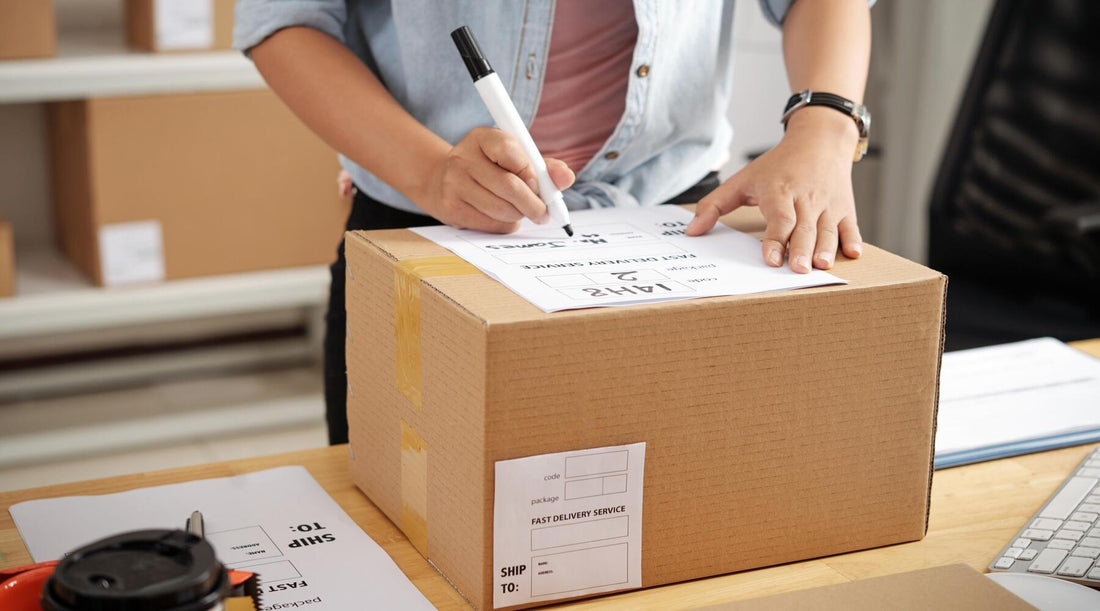What Are Different Order Status Types & Their Meanings

Imagine this: You're eagerly waiting for a package to arrive. The anticipation is building, and you can't help but check your tracking app multiple times a day. But what do all those different order status terms actually mean? Understanding these can save you from unnecessary stress and confusion. Let's dive into it!
What Is An Order Status?
An order status refers to the current stage of your purchase in the fulfillment process. From the moment you click “buy" until the item reaches your doorstep, your order goes through several stages. Each of these stages is labeled differently to keep you informed about where your package is. Most online retailers and shipping companies provide a way to check this status online through their websites or apps. Whether you're shopping for yourself or running an e-commerce store, knowing these statuses can be incredibly helpful.

What Many Order Status Types Are There?
There are 13 main types of order statuses that you might encounter:
1. Order Placed
After you place your order, the seller has received it. This is the first step in the journey of your package. At this point, you typically receive a confirmation email from the seller informing you that they have received your order. In this status, payment has not yet been processed; if you find any errors, now is the best time to correct them.
2. Order Confirmed
The seller has confirmed receipt of your payment, and your order will soon enter the processing stage. Once payment verification is complete, the seller begins preparing your order and may send you a second confirmation email. This phase includes inventory checks, which might take some time if items are out of stock. If there are any payment issues, you will be notified to resolve them.
3. Order Processing
At this stage, your order is being picked, packed, and prepared for shipment. The seller's warehouse team selects the items from inventory, ensuring all items match the order correctly, and sometimes performs additional tasks like gift wrapping or customization. In some cases, sellers allow cancellations at this stage, but it depends on their policies.
4. Shipped / Dispatched
Your order has left the warehouse and is on its way to the courier. At this time, you usually receive a tracking number to monitor your package in real-time. This stage means the seller has handed over the package to the shipping company and provided shipping details and the estimated delivery date. The tracking number is your best resource to follow the package’s journey.
5. In Transit
Your package is en route to the local delivery center. The package moves between different distribution centers and transit points, with the specific transit time depending on distance and mode of transportation. During this period, delays may occur due to weather, logistics, or other unforeseen factors, and tracking information should be updated regularly.
6. Out for Delivery
The package has been picked up by the delivery driver and will reach you soon. The package has arrived at the local delivery center and is now on the truck for final delivery. You can expect to receive the package within hours. Ensure someone is available to receive the package, especially if a signature is required, and stay alert for notifications or calls from the courier.
7. Delivered
Good news! Your package has reached its destination and has been successfully delivered. The courier has delivered the package to your specified address or designated location. If you cannot find the package, check around your house or look for a delivery attempt notice. Occasionally, packages may be left with a neighbor or in a secure place like a porch. If the status shows "Delivered" but you haven't received it, contact the seller or courier immediately.
*anchor-1
8. Attempted Delivery
The courier attempted to deliver your package but was unsuccessful, possibly because no one was available to receive it. The courier may leave a notice indicating when they will try again or how to retrieve the package. Follow the instructions on the notice to avoid further delays. You may have options to reschedule delivery or change the delivery address. Multiple failed attempts might lead to the package being returned to the sender.
9. Canceled
Your order has been canceled, either by you or the seller, and the transaction is void. This could happen due to reasons like insufficient stock, payment issues, or cancellation requests. Check your email for details and instructions regarding refunds or reordering. Refunds may take several days to process. Understand the seller’s cancellation policy to know your rights and options.
10. Held at Customs
If you are ordering internationally, your package may be held at customs for inspection. Customs clearance involves checking the package contents and documents for compliance with local laws. The time required at this stage varies by country and package contents. You may need to pay additional fees or provide extra documentation. Be patient and follow the instructions provided to expedite the process.
11. Awaiting Pickup
Your order is ready for pickup at a specified location. You will receive a notification including the pickup address and business hours. Ensure you bring identification and any required documents. Some locations may require a QR code or reference number for verification. Pick up the package promptly to avoid storage fees or returns.
12. Delayed
There has been a delay in the delivery process, commonly due to weather conditions or logistical issues. Delays can occur at any stage of the shipping process and are usually communicated through updates. Monitor tracking information for the latest updates. Contact the seller or courier for detailed information and potential solutions. Prepare for possible short-term delays and plan accordingly.
13. Lost
Unfortunately, your package cannot be found and is considered lost. In this rare situation, contact the seller or courier immediately to initiate a claim process. Most reputable sellers will offer a replacement or refund for lost packages. You need to gather all relevant information, such as order numbers and tracking details, when filing a claim.
How to Quickly Receive Your Orders: Tips for Recipients
Wouldn't it be great if you could receive your orders even faster? Here are some tips to help speed up the process:
-
Double Check the Info: Ensure that all your details, such as your shipping address and contact number, are correct. A minor typo can cause significant delays.
-
Stay Updated with Notifications: Sign up for email or SMS notifications from the retailer or shipping company. This will keep you informed about the progress of your package.
-
Contact Sellers or Couriers on Time: If you notice any unusual delays or if your tracking info hasn't updated in a while, don't hesitate to contact the seller or the courier service. They may be able to resolve the issue quicker than you expect.
-
Opt for Expedited Shipping: If you’re in a hurry, many sellers offer expedited shipping options for an additional fee. It's worth considering when time is of the essence.
-
Use a Secure Delivery Location: Provide instructions for a safe place where the courier can leave your package if you’re not home. This minimizes the risk of missing or delayed deliveries.
Ensuring Safe & Timely Delivery to Customers: Tips for Merchants
As a merchant, ensuring that your products reach your customers safely and on time is crucial. Here are some strategies to make that happen:
-
Print Clear Shipping Labels: Use high-quality, durable shipping labels. Labels that are clear and adhesive ensure that the information doesn’t wear off during transit. This reduces the chances of packages going missing or being delayed.
-
Check the Info Before Printing Labels: Always double-check the shipping details before printing labels. Incorrect information can lead to undelivered packages and unhappy customers.
-
Choose High-Quality Transparent Tapes: Invest in good quality transparent packing tape. Low-quality tape can obscure important information or come off during transit, causing delays or loss.
-
Contact Courier Based on Customers' Feedback: Maintain open communication with your delivery partners. If customers report issues, addressing them promptly with your courier can prevent future problems.
-
Implement a Reliable Tracking System: Provide your customers with a reliable tracking system. This keeps them informed and reduces the number of customer service inquiries you’ll need to handle.
-
Offer Multiple Shipping Options: Give your customers various shipping options, including standard, expedited, and overnight shipping. This flexibility can enhance their shopping experience and meet different urgency levels.
The Bottom Line
Understanding the different types of order statuses can significantly improve your online shopping experience, whether you're a buyer eagerly awaiting your package or a seller aiming to keep your customers satisfied. Keep these tips in mind to ensure smooth, timely, and hassle-free deliveries.



